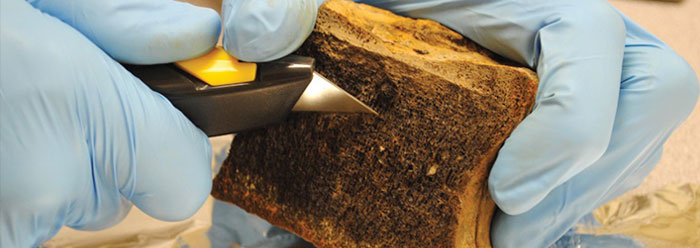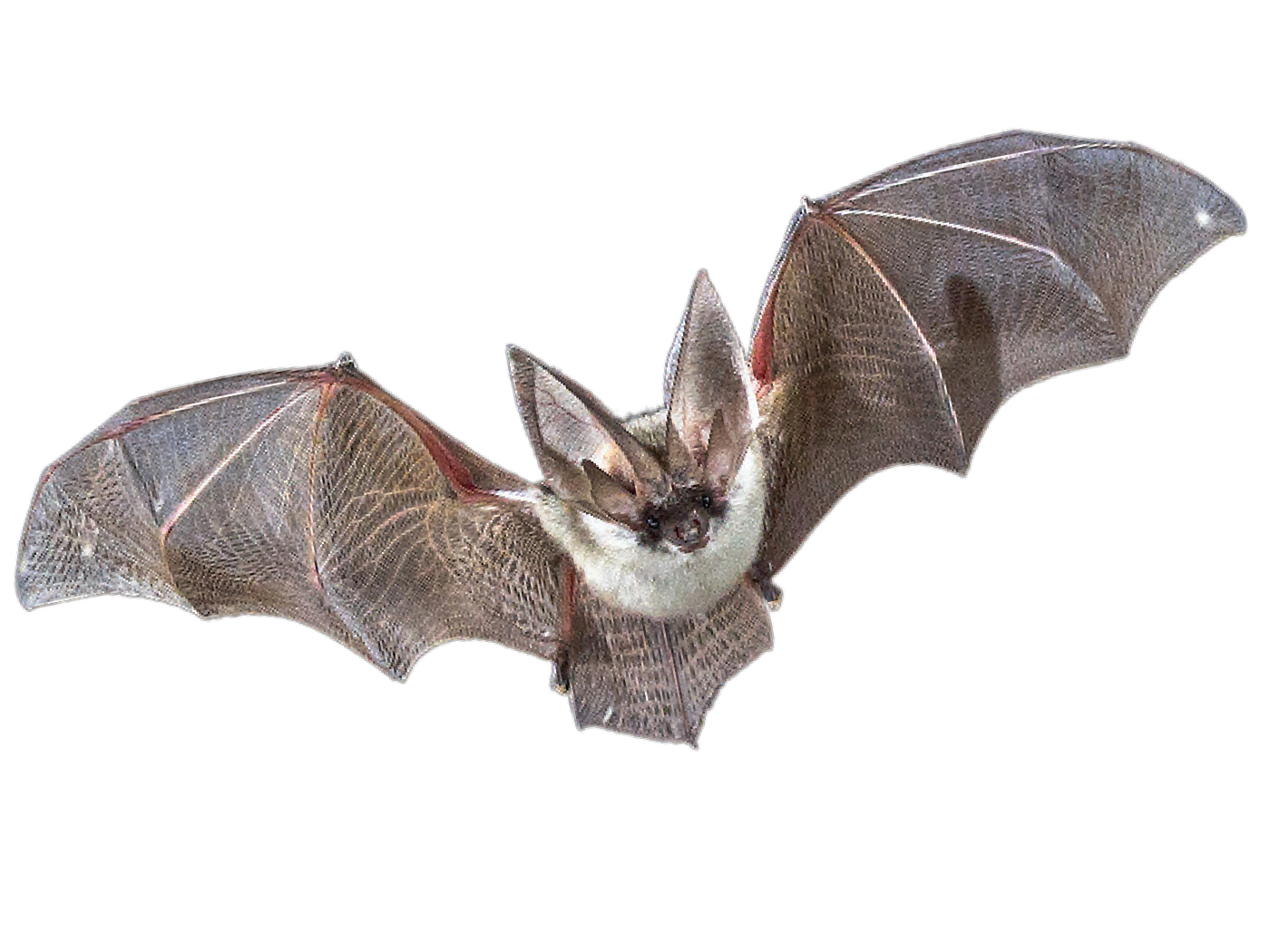ICR researchers continue to look for radiocarbon in ancient carbon-containing Earth materials. Archaeologists commonly use carbon-14, or radiocarbon, to estimate ages for organic artifacts. No measurable amounts should exist in samples older than about 100,000 years because radiocarbon atoms would decay into nitrogen-14 before then.1 However, we keep finding carbon-14 in materials designated as tens or even hundreds of millions of years old.
 ICR’s RATE initiative (Radioisotopes and the Age of the Earth) revealed radiocarbon in coal samples and deeply buried diamonds deemed hundreds of millions of years old.2 Andrew Snelling later reported radiocarbon in supposedly 32 million-year-old wood from a Colorado mine3 and in a supposedly 116 million-year-old ammonite shell.4
ICR’s RATE initiative (Radioisotopes and the Age of the Earth) revealed radiocarbon in coal samples and deeply buried diamonds deemed hundreds of millions of years old.2 Andrew Snelling later reported radiocarbon in supposedly 32 million-year-old wood from a Colorado mine3 and in a supposedly 116 million-year-old ammonite shell.4
Secular scientists published dozens of carbon-14 measurements from samples considered much older than 100,000 years long before the RATE scientists found their examples, but so far few efforts have systematically explored radiocarbon in Mesozoic fossils.5 I partnered with Canadian creation researcher Vance Nelson and others to report 16 radiocarbon results from wood, seven dinosaur bones, and lizard and fish skeletons removed from sedimentary rock.6 Vance acquired most of the fossils and their radiocarbon results. I added more and compared them with already published carbon dates for fossils as well as the RATE team’s ten coal samples. If Cenozoic, Mesozoic, and Paleozoic sources were deposited in the single Flood year, we would expect them to contain comparable amounts of radiocarbon. We found exactly that in almost 50 samples taken from throughout the geologic column.7
We could only find two published secular radiocarbon dates for fossils found below Ice Age layers. One reported radiocarbon in a supposedly 70 million-year-old mosasaur fossil from Belgium,8 and the other reported radiocarbon in a supposedly 505 million-year-old sponge from Canada’s famous Burgess Shale.9 Their authors suggested contamination, but neither study presented scientific evidence to support this assertion. Claiming contamination merely offers a hypothetical rescue from radiocarbon’s implications for their long-age assignments. The contamination story holds that chemicals containing modern radiocarbon adhered to or replaced ancient carbon in coal, wood, shell, collagen, or bone. What would be the sources of such contamination?
Contaminated fossils might be found near geographically or stratigraphically localized contamination sources, although there are no known plausible ways to bombard underground nitrogen with the high-energy neutrons required to change it into radiocarbon.10 Our discoveries of radiocarbon in samples from all over the world and throughout the geologic column refute localized contamination. We also compared radiocarbon results acquired at five different laboratories, ruling out lab-induced contamination.11
Furthermore, lab procedures are excellent at removing contaminating carbon, unless it has replaced the original carbon in a process called isotope exchange. There is at present no direct test for whether or not isotope exchange took place while a fossil was underground, but we plan to look for fossil clues that could indirectly test it. For example, preliminary analyses of fossil bones reveal carbon-13 to carbon-12 ratios very similar to ratios found in modern bones, despite the fact that carbon-13 is very rare. What are the odds that contaminating processes from different locations would coincidentally produce the precise carbon-13 to carbon-12 ratios that mimic fresh bones? These compelling results leave open the hypotheses that some, most, or all of the detected radiocarbon is intrinsic to the fossils. If so, then they were deposited thousands, not millions, of years ago in accord with the biblical Flood model.
Two years ago, Dr. Jake Hebert stated, “We are confident that additional testing will only strengthen the case for a biblically consistent age of the earth.”12 Our new results so far show he was right. However, more hypotheses await testing, and more possible sources of contamination need to be explored, so we will continue analyzing suitable fossils and their radiocarbon results as the Lord permits.
References
- Hebert, J. 2013. Rethinking Carbon-14 Dating: What Does It Really Tell Us about the Age of the Earth? Acts & Facts. 42 (4): 12-14.
- See icr.org/rate.
- Snelling, A. A. 2008. Radiocarbon in “Ancient” Fossil Wood. Acts & Facts. 37 (1): 10.
- Snelling, A. A. 2008. Radiocarbon Ages for Fossil Ammonites and Wood in Cretaceous Strata near Redding, California. Answers Research Journal. 1: 123-144.
- See references in Giem, P. 2001. Carbon-14 Content of Fossil Carbon. Origins. 51: 6-30.
- Otis Kline, Hugh Miller, and Kevin Anderson all helped.
- Thomas, B. and V. Nelson. 2015. Radiocarbon in Dinosaur and Other Fossils. Creation Research Society Quarterly. 51 (4): 299-311.
- Lindgren, J. et al. 2011. Microspectroscopic Evidence of Cretaceous Bone Proteins. PLoS ONE. 6 (4): e19445.
- Ehrlich, H. et al. 2013. Discovery of 505-million-year old chitin in the basal demosponge Vauxia gracilenta. Scientific Reports. 3: 3497.
- RATE research ruled out radiocarbon production by neutrons interacting with nitrogen or carbon-13 impurities in buried specimens. See icr.org/rate.
- We use third-party liaisons to dialogue with secular labs that would not work directly with creation scientists.
- Hebert, J. 2013. Do Young C-14 Results Reflect Contamination? Acts & Facts. 42 (7): 20.
* Mr. Thomas is Science Writer at the Institute for Creation Research.





















